Tao Wen
Large Reasoning Embedding Models: Towards Next-Generation Dense Retrieval Paradigm
Oct 16, 2025Abstract:In modern e-commerce search systems, dense retrieval has become an indispensable component. By computing similarities between query and item (product) embeddings, it efficiently selects candidate products from large-scale repositories. With the breakthroughs in large language models (LLMs), mainstream embedding models have gradually shifted from BERT to LLMs for more accurate text modeling. However, these models still adopt direct-embedding methods, and the semantic accuracy of embeddings remains inadequate. Therefore, contrastive learning is heavily employed to achieve tight semantic alignment between positive pairs. Consequently, such models tend to capture statistical co-occurrence patterns in the training data, biasing them toward shallow lexical and semantic matches. For difficult queries exhibiting notable lexical disparity from target items, the performance degrades significantly. In this work, we propose the Large Reasoning Embedding Model (LREM), which novelly integrates reasoning processes into representation learning. For difficult queries, LREM first conducts reasoning to achieve a deep understanding of the original query, and then produces a reasoning-augmented query embedding for retrieval. This reasoning process effectively bridges the semantic gap between original queries and target items, significantly improving retrieval accuracy. Specifically, we adopt a two-stage training process: the first stage optimizes the LLM on carefully curated Query-CoT-Item triplets with SFT and InfoNCE losses to establish preliminary reasoning and embedding capabilities, and the second stage further refines the reasoning trajectories via reinforcement learning (RL). Extensive offline and online experiments validate the effectiveness of LREM, leading to its deployment on China's largest e-commerce platform since August 2025.
Metric-Solver: Sliding Anchored Metric Depth Estimation from a Single Image
Apr 16, 2025Abstract:Accurate and generalizable metric depth estimation is crucial for various computer vision applications but remains challenging due to the diverse depth scales encountered in indoor and outdoor environments. In this paper, we introduce Metric-Solver, a novel sliding anchor-based metric depth estimation method that dynamically adapts to varying scene scales. Our approach leverages an anchor-based representation, where a reference depth serves as an anchor to separate and normalize the scene depth into two components: scaled near-field depth and tapered far-field depth. The anchor acts as a normalization factor, enabling the near-field depth to be normalized within a consistent range while mapping far-field depth smoothly toward zero. Through this approach, any depth from zero to infinity in the scene can be represented within a unified representation, effectively eliminating the need to manually account for scene scale variations. More importantly, for the same scene, the anchor can slide along the depth axis, dynamically adjusting to different depth scales. A smaller anchor provides higher resolution in the near-field, improving depth precision for closer objects while a larger anchor improves depth estimation in far regions. This adaptability enables the model to handle depth predictions at varying distances and ensure strong generalization across datasets. Our design enables a unified and adaptive depth representation across diverse environments. Extensive experiments demonstrate that Metric-Solver outperforms existing methods in both accuracy and cross-dataset generalization.
Bridging Domain Adaptation and Graph Neural Networks: A Tensor-Based Framework for Effective Label Propagation
Feb 12, 2025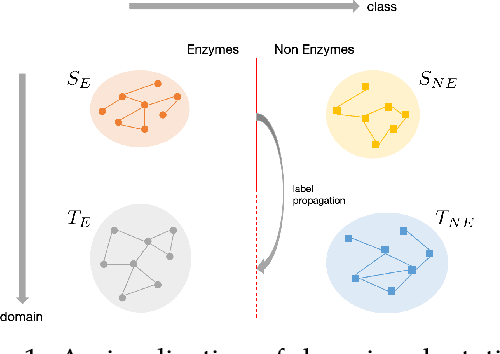
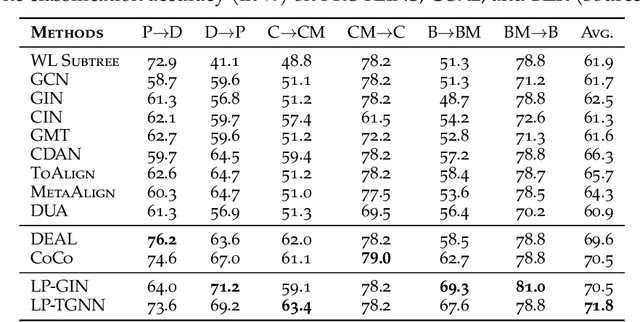
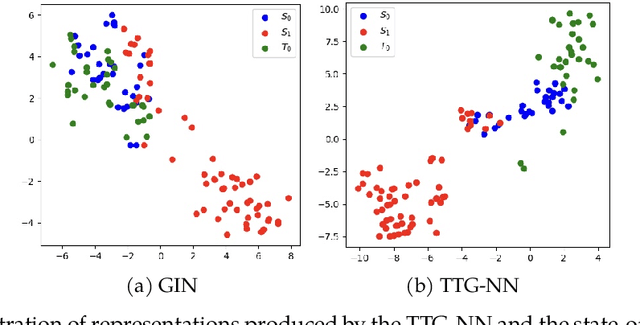

Abstract:Graph Neural Networks (GNNs) have recently become the predominant tools for studying graph data. Despite state-of-the-art performance on graph classification tasks, GNNs are overwhelmingly trained in a single domain under supervision, thus necessitating a prohibitively high demand for labels and resulting in poorly transferable representations. To address this challenge, we propose the Label-Propagation Tensor Graph Neural Network (LP-TGNN) framework to bridge the gap between graph data and traditional domain adaptation methods. It extracts graph topological information holistically with a tensor architecture and then reduces domain discrepancy through label propagation. It is readily compatible with general GNNs and domain adaptation techniques with minimal adjustment through pseudo-labeling. Experiments on various real-world benchmarks show that our LP-TGNN outperforms baselines by a notable margin. We also validate and analyze each component of the proposed framework in the ablation study.
Can Large Language Models Be Trusted as Black-Box Evolutionary Optimizers for Combinatorial Problems?
Jan 25, 2025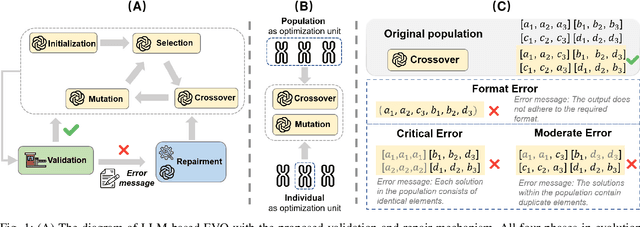
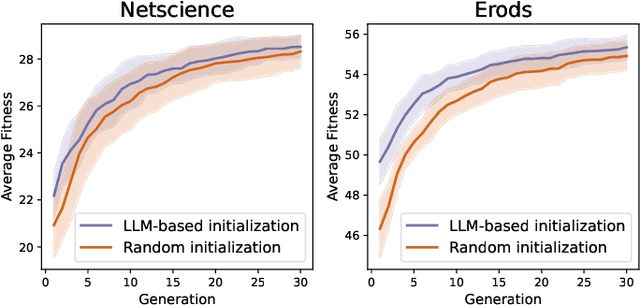


Abstract:Evolutionary computation excels in complex optimization but demands deep domain knowledge, restricting its accessibility. Large Language Models (LLMs) offer a game-changing solution with their extensive knowledge and could democratize the optimization paradigm. Although LLMs possess significant capabilities, they may not be universally effective, particularly since evolutionary optimization encompasses multiple stages. It is therefore imperative to evaluate the suitability of LLMs as evolutionary optimizer (EVO). Thus, we establish a series of rigid standards to thoroughly examine the fidelity of LLM-based EVO output in different stages of evolutionary optimization and then introduce a robust error-correction mechanism to mitigate the output uncertainty. Furthermore, we explore a cost-efficient method that directly operates on entire populations with excellent effectiveness in contrast to individual-level optimization. Through extensive experiments, we rigorously validate the performance of LLMs as operators targeted for combinatorial problems. Our findings provide critical insights and valuable observations, advancing the understanding and application of LLM-based optimization.
Tensor-view Topological Graph Neural Network
Jan 30, 2024Abstract:Graph classification is an important learning task for graph-structured data. Graph neural networks (GNNs) have recently gained growing attention in graph learning and have shown significant improvements in many important graph problems. Despite their state-of-the-art performances, existing GNNs only use local information from a very limited neighborhood around each node, suffering from loss of multi-modal information and overheads of excessive computation. To address these issues, we propose a novel Tensor-view Topological Graph Neural Network (TTG-NN), a class of simple yet effective topological deep learning built upon persistent homology, graph convolution, and tensor operations. This new method incorporates tensor learning to simultaneously capture Tensor-view Topological (TT), as well as Tensor-view Graph (TG) structural information on both local and global levels. Computationally, to fully exploit graph topology and structure, we propose two flexible TT and TG representation learning modules that disentangle feature tensor aggregation and transformation and learn to preserve multi-modal structure with less computation. Theoretically, we derive high probability bounds on both the out-of-sample and in-sample mean squared approximation errors for our proposed Tensor Transformation Layer (TTL). Real data experiments show that the proposed TTG-NN outperforms 20 state-of-the-art methods on various graph benchmarks.
SVBRDF Recovery From a Single Image With Highlights using a Pretrained Generative Adversarial Network
Oct 29, 2021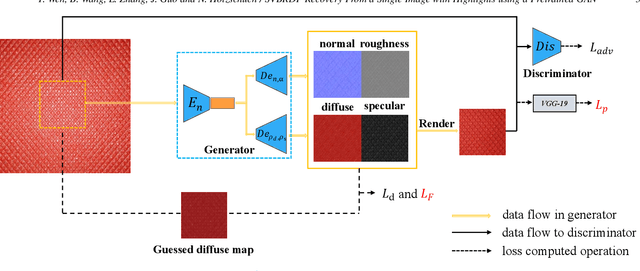

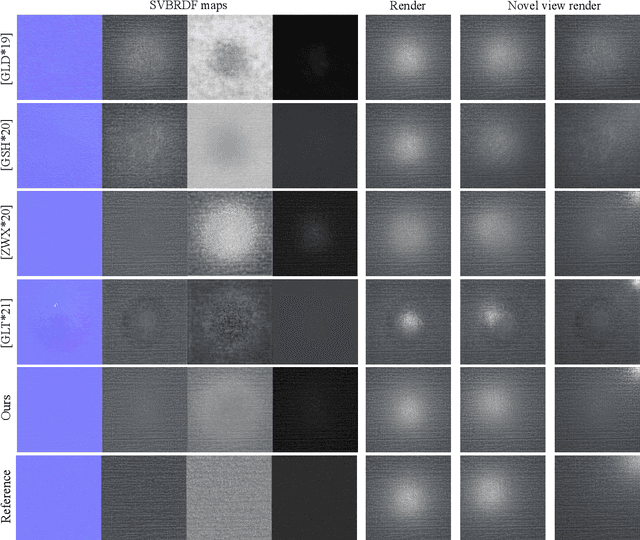
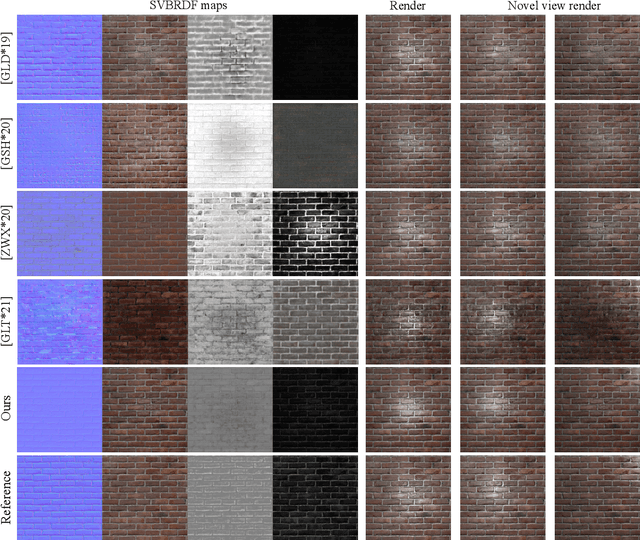
Abstract:Spatially-varying bi-directional reflectance distribution functions (SVBRDFs) are crucial for designers to incorporate new materials in virtual scenes, making them look more realistic. Reconstruction of SVBRDFs is a long-standing problem. Existing methods either rely on extensive acquisition system or require huge datasets which are nontrivial to acquire. We aim to recover SVBRDFs from a single image, without any datasets. A single image contains incomplete information about the SVBRDF, making the reconstruction task highly ill-posed. It is also difficult to separate between the changes in color that are caused by the material and those caused by the illumination, without the prior knowledge learned from the dataset. In this paper, we use an unsupervised generative adversarial neural network (GAN) to recover SVBRDFs maps with a single image as input. To better separate the effects due to illumination from the effects due to the material, we add the hypothesis that the material is stationary and introduce a new loss function based on Fourier coefficients to enforce this stationarity. For efficiency, we train the network in two stages: reusing a trained model to initialize the SVBRDFs and fine-tune it based on the input image. Our method generates high-quality SVBRDFs maps from a single input photograph, and provides more vivid rendering results compared to previous work. The two-stage training boosts runtime performance, making it 8 times faster than previous work.
Targeted Source Detection for Environmental Data
Aug 29, 2019
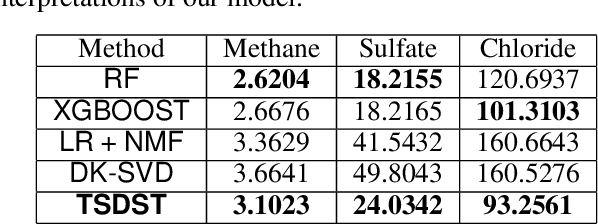

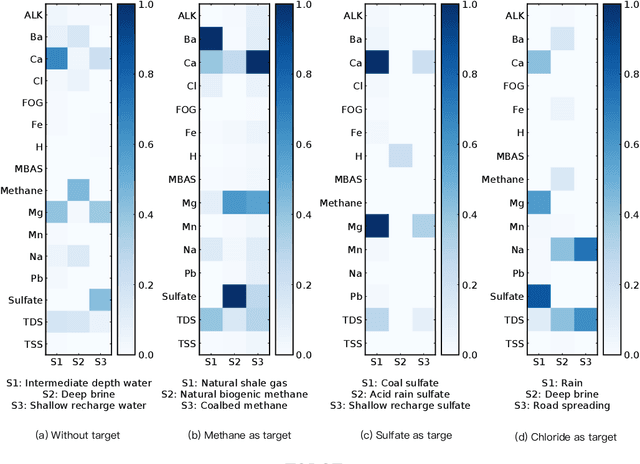
Abstract:In the face of growing needs for water and energy, a fundamental understanding of the environmental impacts of human activities becomes critical for managing water and energy resources, remedying water pollution, and making regulatory policy wisely. Among activities that impact the environment, oil and gas production, wastewater transport, and urbanization are included. In addition to the occurrence of anthropogenic contamination, the presence of some contaminants (e.g., methane, salt, and sulfate) of natural origin is not uncommon. Therefore, scientists sometimes find it difficult to identify the sources of contaminants in the coupled natural and human systems. In this paper, we propose a technique to simultaneously conduct source detection and prediction, which outperforms other approaches in the interdisciplinary case study of the identification of potential groundwater contamination within a region of high-density shale gas development.
 Add to Chrome
Add to Chrome Add to Firefox
Add to Firefox Add to Edge
Add to Edge